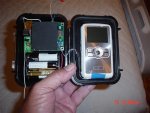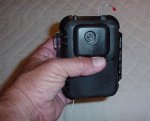Working on my little video camera project still, and I am using some cheap 315mhz RF units for remote triggering, to turn it on. Thanks to the good doc's code, I have it working OK, but I sure would like to save some battery power too...
My little receiver has to be on all the time, I know that, and it uses about 200ua. My question for you is...can I save any power being used by my 08M??? I tried a few things already, but I have not had success saving power and have it still work lol...
Here is the receiver code, I borrowed most of it
low 0
low 1
low 2
disablebod
main:
serin 4,N2400,("TW"),b0,b1,b2,b3,b4,b5,b6,b7,b8,b9,b10,b11,b12,b13
b13=255-b13' inverse again only need to really test one
if b12=b13 then
high 2
pause 10
low 2
endif
goto main
My little receiver has to be on all the time, I know that, and it uses about 200ua. My question for you is...can I save any power being used by my 08M??? I tried a few things already, but I have not had success saving power and have it still work lol...
Here is the receiver code, I borrowed most of it
low 0
low 1
low 2
disablebod
main:
serin 4,N2400,("TW"),b0,b1,b2,b3,b4,b5,b6,b7,b8,b9,b10,b11,b12,b13
b13=255-b13' inverse again only need to really test one
if b12=b13 then
high 2
pause 10
low 2
endif
goto main


